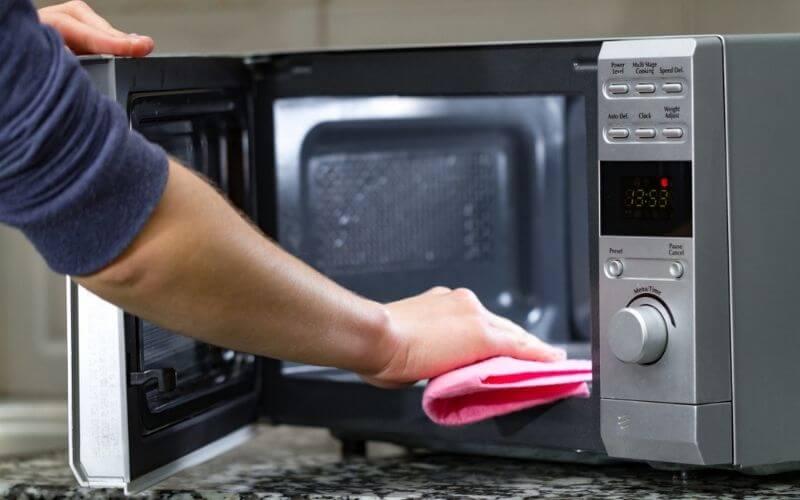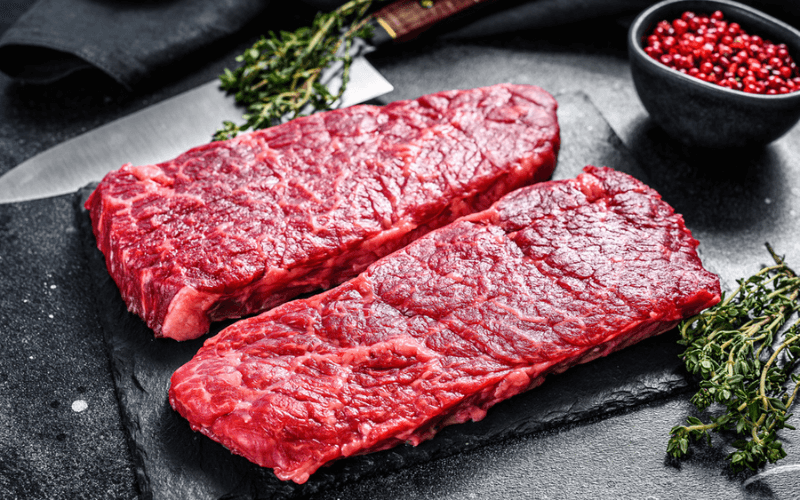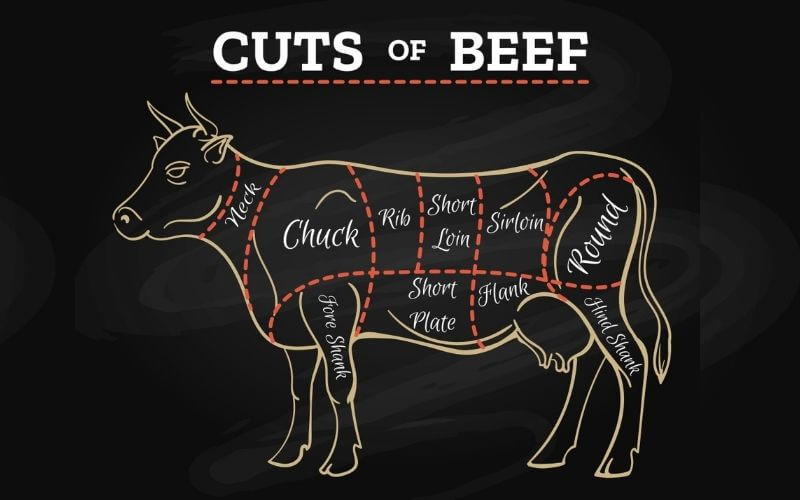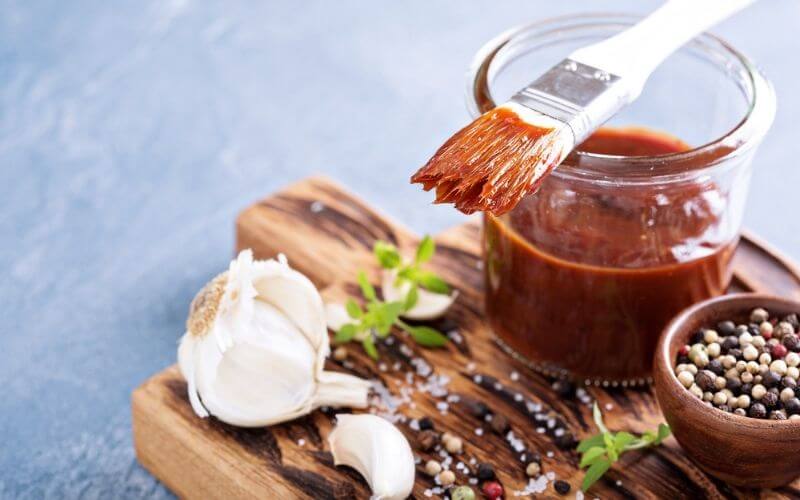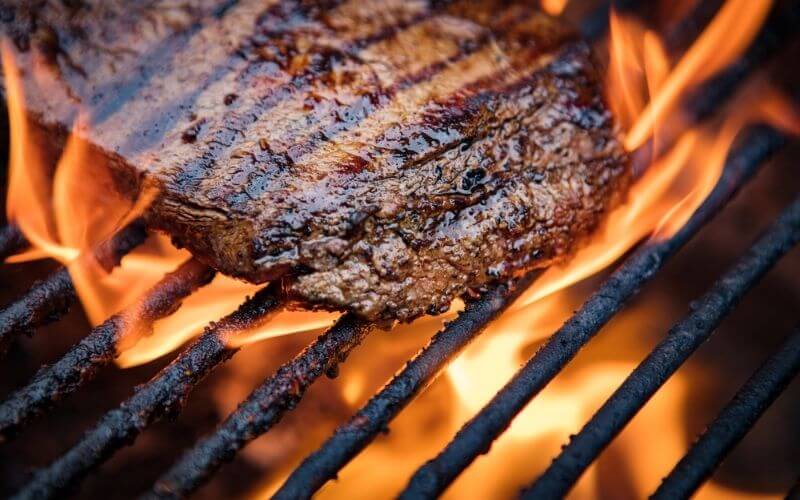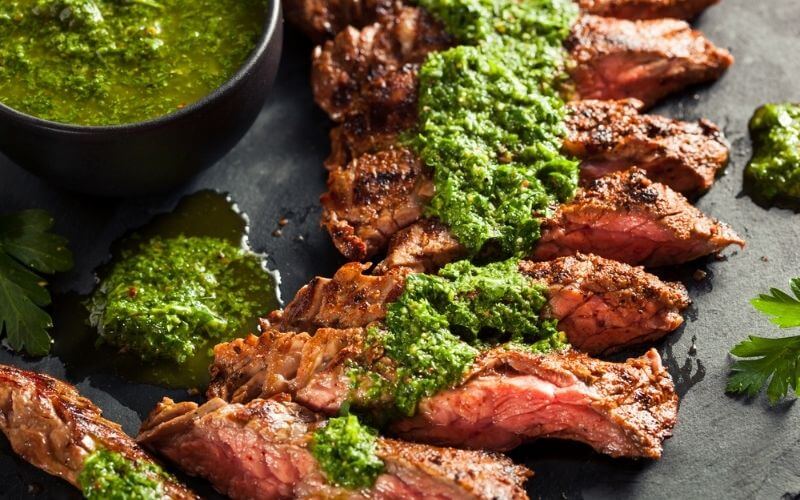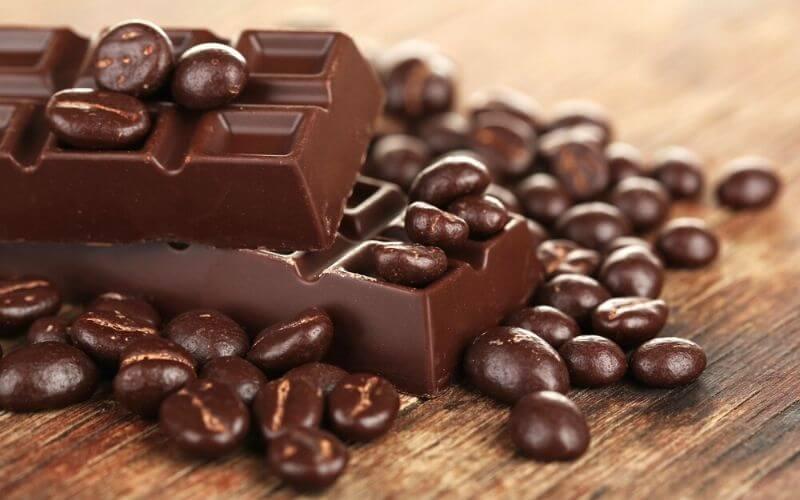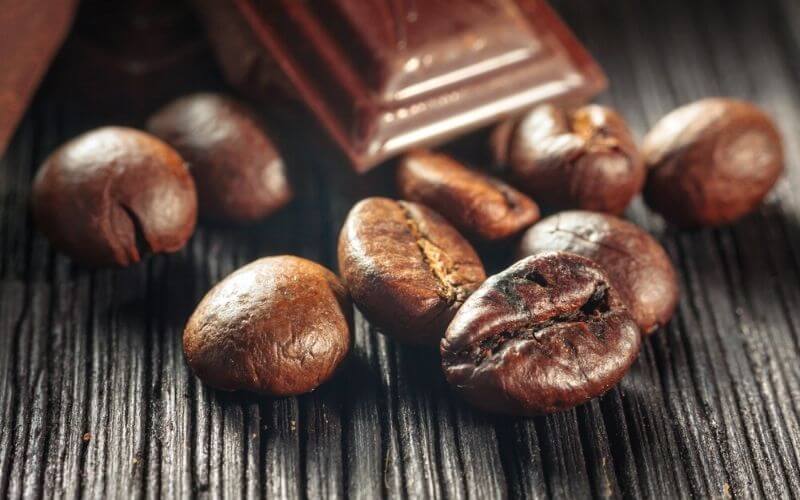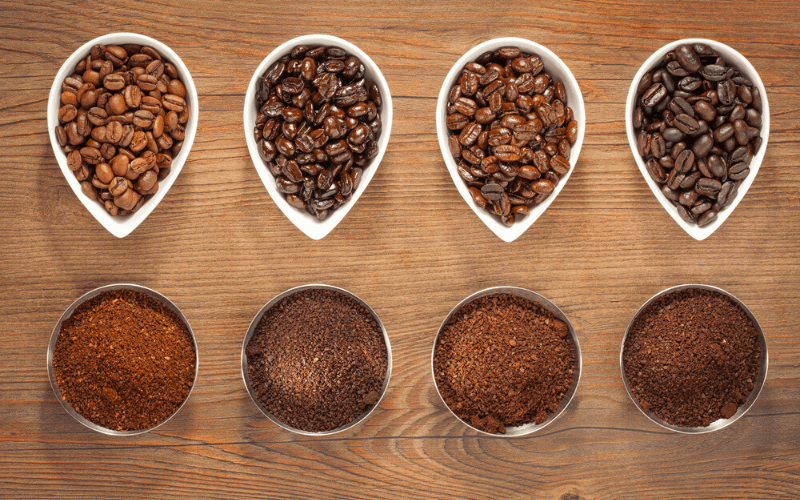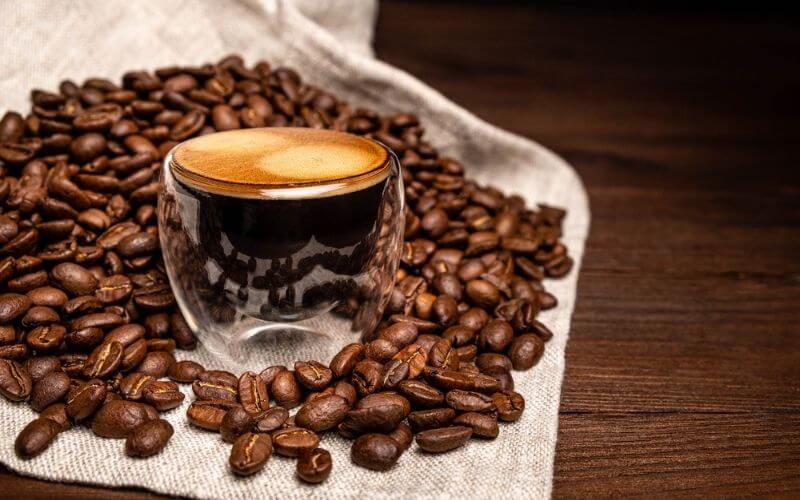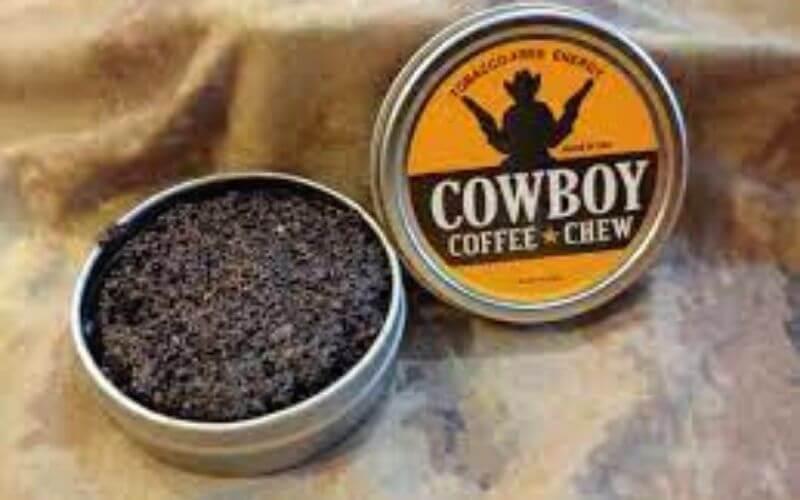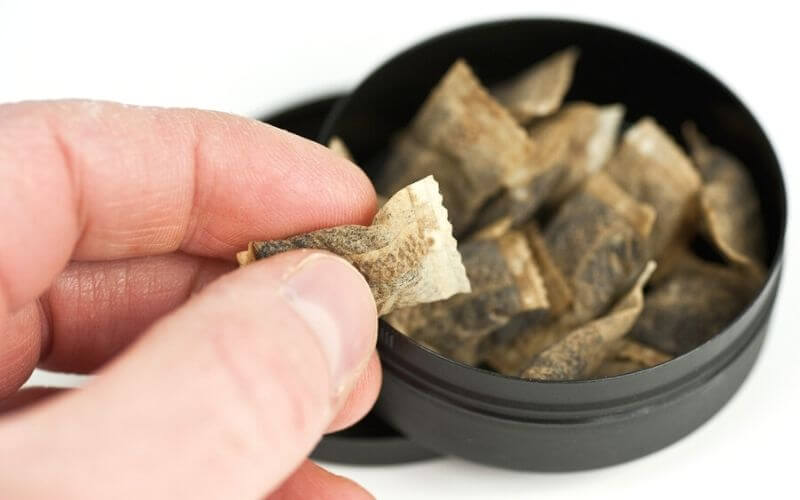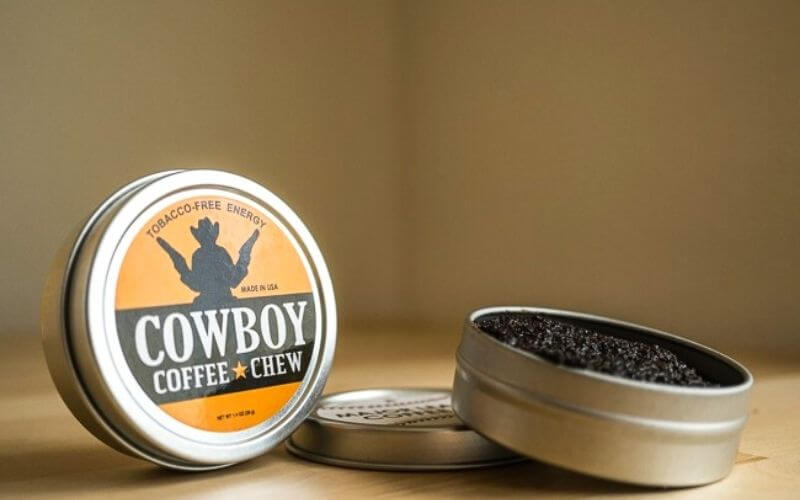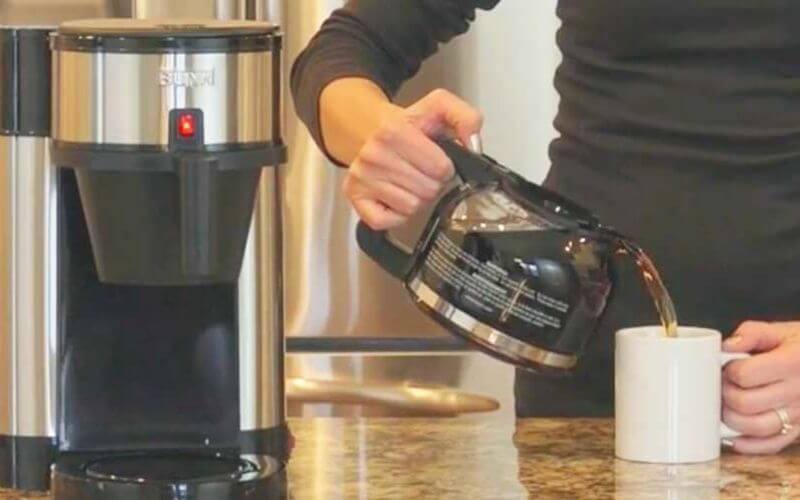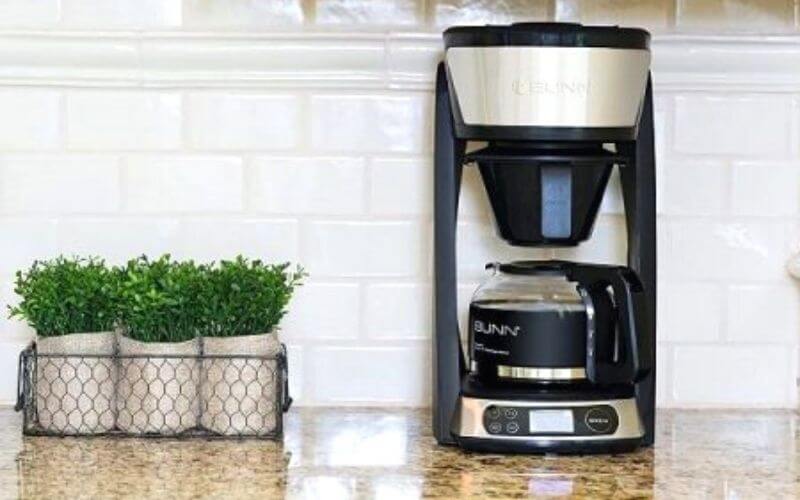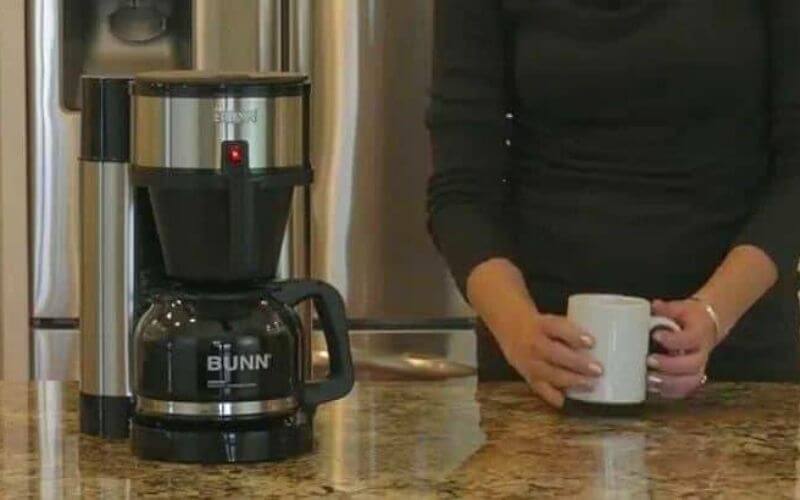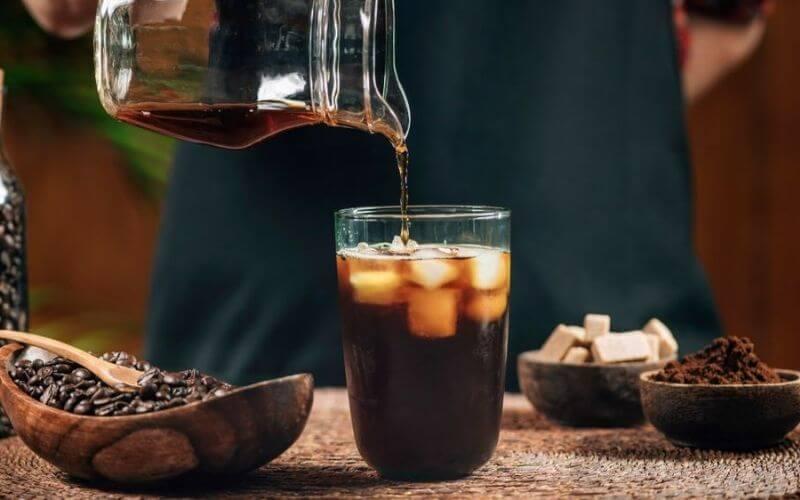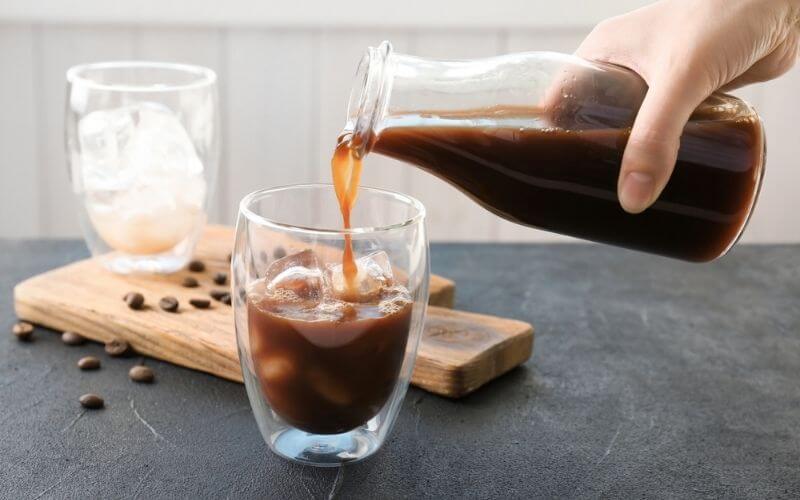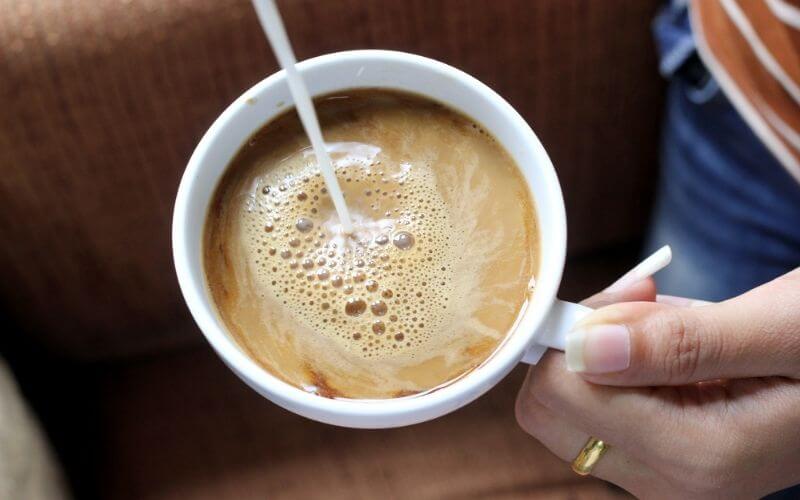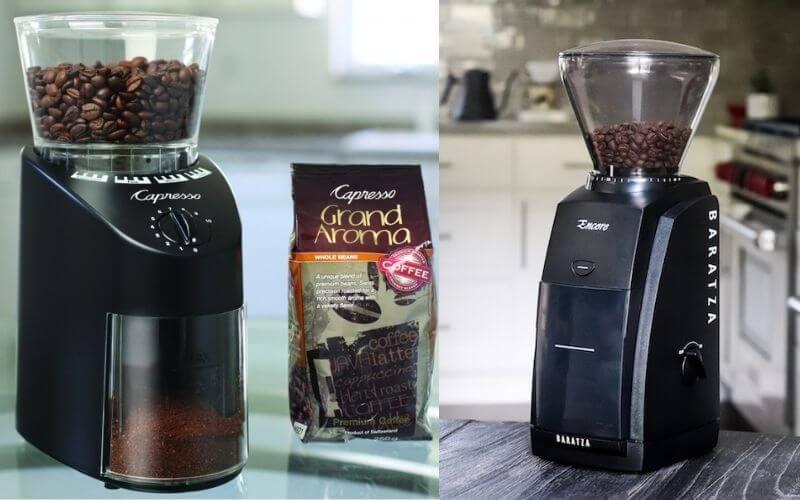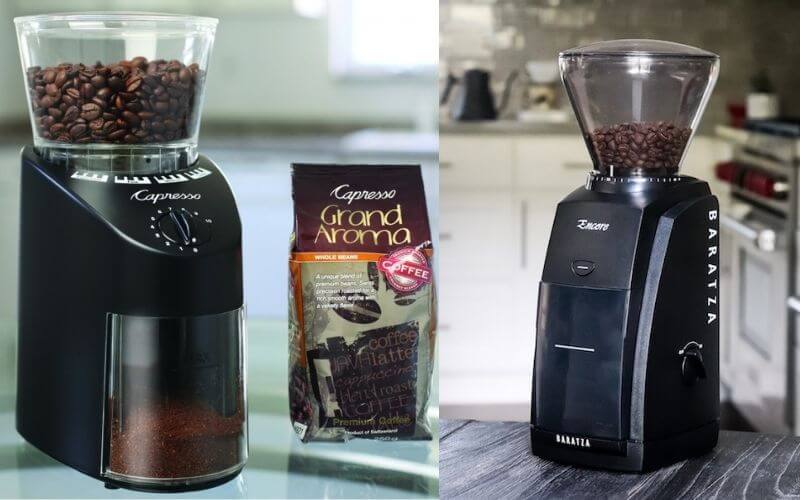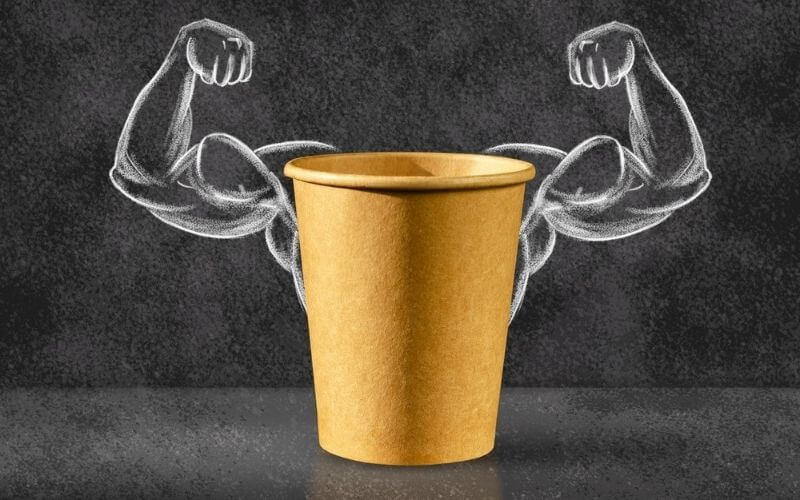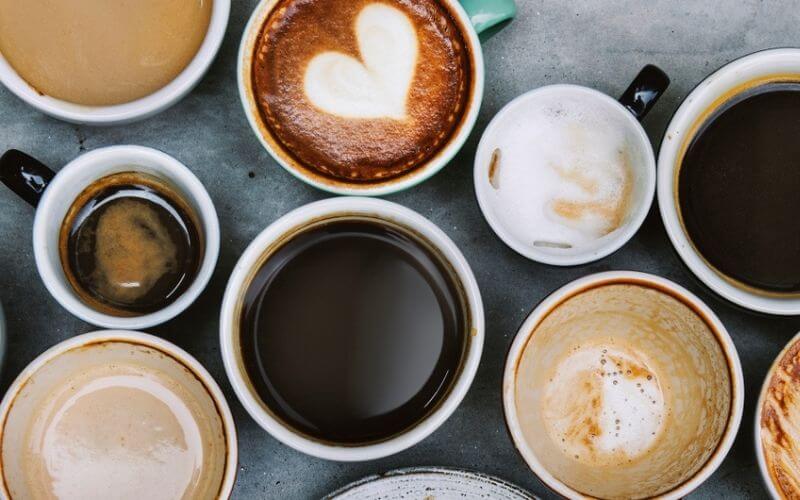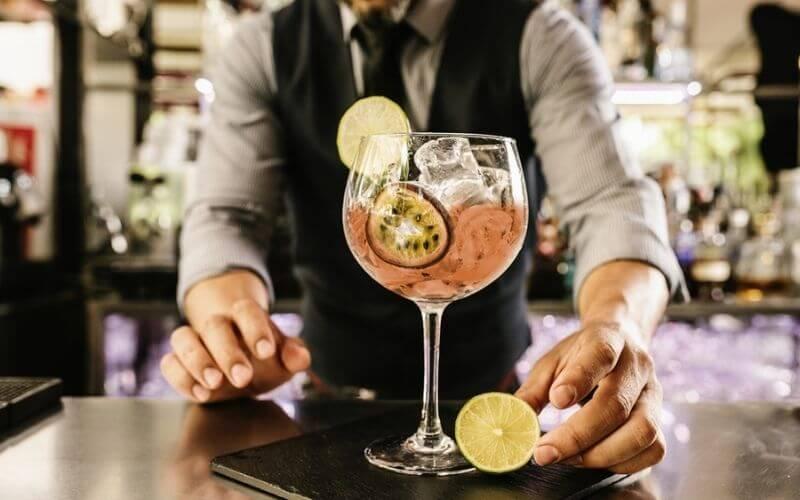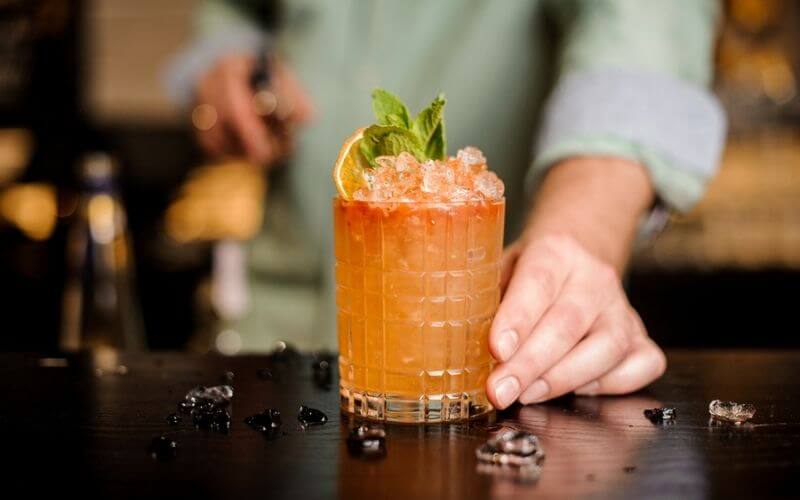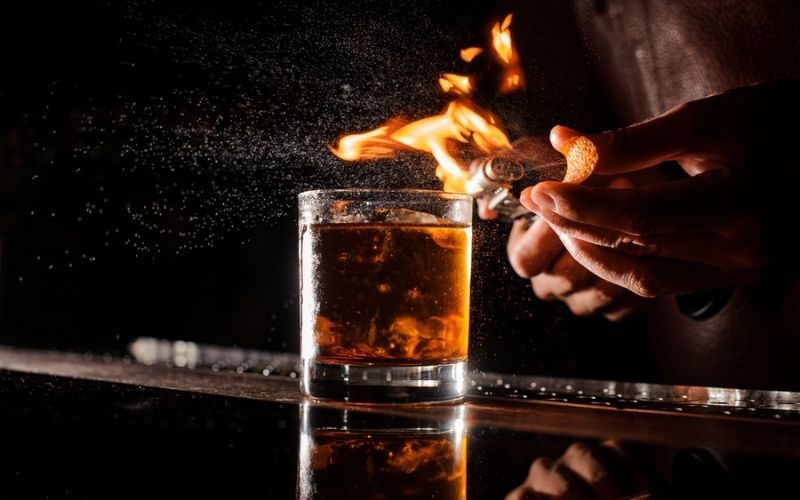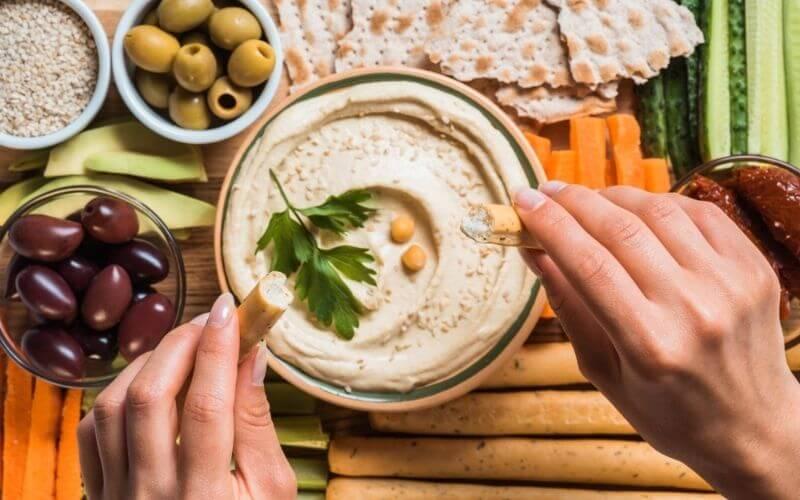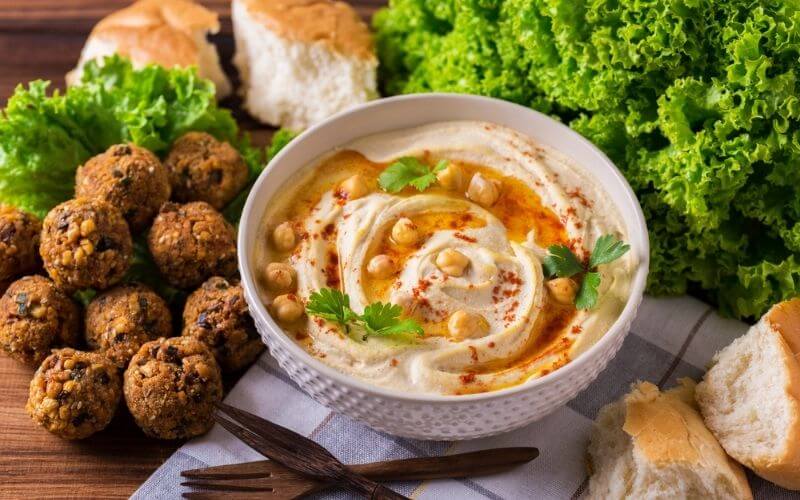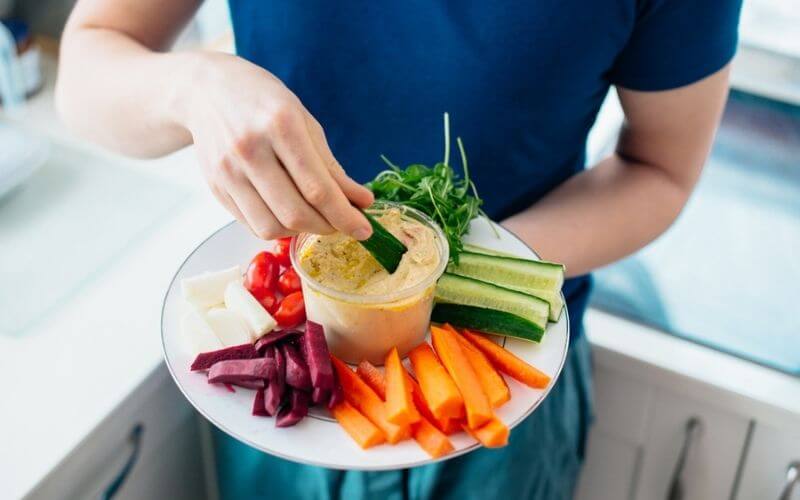When you don’t have a full-sized kitchen, a toaster oven can be a lifesaver. It works and functions very similarly to a convection oven. Surprisingly enough, this handy gadget can prepare a wide range of dishes.
From perfectly crispy toasted bread in the morning to lightly roasted chicken for dinner, a toaster oven has become a staple in most apartments.
If you are anything like me, you will find yourself using the toaster oven more than the standard one. That’s due to how small and convenient it is. A toaster oven is also super fast so for a single-person meal, it’s perfect.
The more you use your toaster oven, the dirtier it will get. So it’s necessary to always keep the oven clean and pristine. In this article, we will talk about how to clean a toaster oven easily and efficiently!
Learn more about 10 Best Toaster Ovens Under $100 Reviews
How to Clean the Inside of Toaster Oven
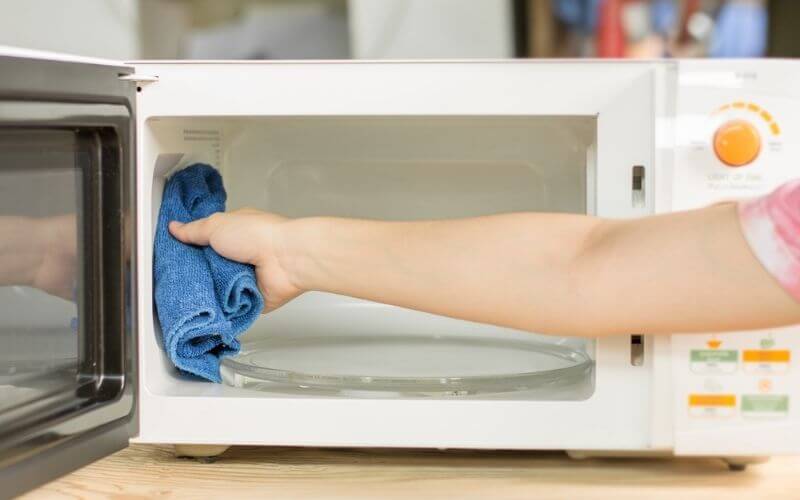
Things You’ll Need:
- A small bowl
- Vinegar
- Dish soap
- Soft sponge
- Napkins/ towels
Here’s our step-by-step guide to cleaning inside of toaster oven:
- Grab a bowl and fill it up with ½ cups of hot water.
- Add 2 tablespoons of white vinegar to the water
- You can also use dish soap instead of vinegar to avoid the vinegary smell. Frankly, vinegar is the best toaster cleaner anyway. So why spend extra money on it?
- Take a soft sponge and dip it into the vinegar-water mixture. Then squeeze it out very well.
- Use the soft side of the sponge and wipe the walls of the oven. Make sure to clean the ceiling as well.
- If you regularly clean your oven, wiping it with soap water is enough for a thorough cleaning.
If the walls are filled with grease or they are burnt from baking, you need to try a different method. We will talk about that in a second.
You can also use this method to clean a new toaster oven before using it for the first time.
How to Clean a Bread Toaster
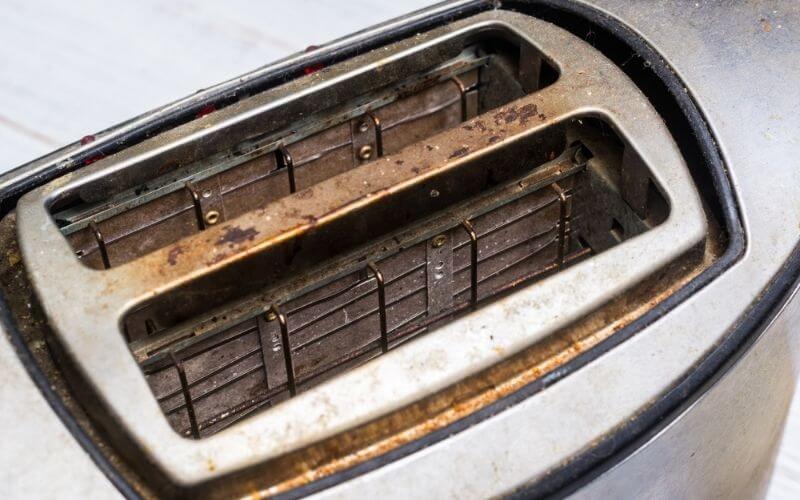
Remember that episode from Kitchen Nightmare where Gordon Ramsay found a dead mouse inside a toaster? We all probably cleaned our toaster the day after that! I know I did.
Even though we use this kitchen gadget almost every single morning, we hardly think of cleaning it. Cleaning a toaster is not that hard to do. So here’s an easy guide on how to clean a bread toaster without getting an electric shock!
Things You’ll Need:
- Cotton cloth/ kitchen towel
- Vinegar/ lemon
- Toothbrush
- Water
Here’s our step-by-step guide to cleaning a bread toaster at home:
- First things first, you need to unplug the toaster. As you’ll be using water to clean it, it can not stay anywhere near an electrical outlet.
- Before getting into the actual cleaning, remove the crumb tray. If you don’t clean this tray regularly, you might find molds and crusty bread crumbs all stuck up to the surface.
- Wash the crumb tray under a running sink with water and soap. The crumbs should come off fairly easily. But for rare cases, you might need to use a scrubbing brush.
- Take a soft cotton fabric or kitchen towel and soak it in vinegar. You don’t want it to be super wet. Slight damp is what we are going for. Too much water can cause the toaster to gather puddles.
- Use the damp cloth to gently clean the slots where the bread slices go. Take your time on this step. If you can’t reach all the areas inside the toaster, use a damp toothbrush to clean it properly.
- After it’s thoroughly cleaned, use a dry fabric to remove all the excess moisture from the toaster.
- You can also go on and give a good wipe with clean water if the vinegary smell bothers you too much. Then turn it upside down and give a shake to remove any excess water droplet or breadcrumbs.
- Let the toaster dry in a safe space for a few hours. You should never use your toaster right after cleaning. Let it dry properly to avoid any electric shock. You can do this before going to bed and by morning it will be ready to make some freshly buttered toast!
Toaster Oven Maintenance Tips
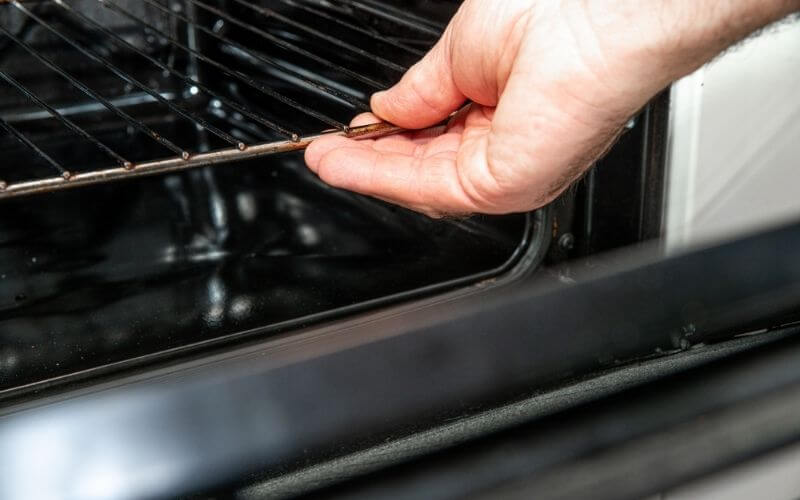
Cleaning a toaster oven is fairly easy, but maintaining it requires a bit more care. There are a few things you should do to maintain the quality of your toaster oven for a long time.
These are our top toaster oven maintenance tips from personal experience!
- After roasting or baking, keep the oven door open so it airs out. This prevents the oven from smelling bad.
- Always use a damp towel to remove cribs and food debris after cooking.
- Use a vinegar-soap spray to gently remove sticky residue.
- For stiff and burnt parts, apply a generous amount of baking soda on top of that area and drop some lemon juices. It will help to remove it easily.
- Lay a sheet of aluminum paper on the bottom of the toaster oven. This prevents heavy grease and catches all the crumbs.
- Always check whether your dishes are oven-proof or not.
- Don’t overcrowd the toaster oven with too many bowls.
Frequently Asked Questions
01. How Do I Get Baked Grease Out of a Toaster Oven?
Cleaning baked grease out of a toaster oven is not as intimidating as it sounds. All you need is baking soda and water. Mix half a cup of baking soda with a few tablespoons of water until it creates a thick paste.
Then spread the paste generously on top of the baked grease area and leave for a few hours. Alternatively, you can leave it overnight and clean it in the morning.
To clean it, all you have to do is wipe it away with a damp cloth or towel. The baking soda will dissolve the tough grease areas and it will need little to no effort to remove.
Then use either vinegar, water or soap to gently clean the surface and remove the leftover grimes.
02. How Do I Get Stains Out of a Toaster Oven?
The best way to remove any stains from your toaster oven is to apply a cleaning solution. You can buy oven cleaners from amazon or you can make them at home.
All you need is vinegar, dish soap, and warm water. Mix these three ingredients and apply using either a spray bottle or a sponge. Let it sit for a while then use a damp cloth to scrub the stain away.
03. What Should I Not Use on Stainless Steel?
If your toaster oven is a stainless steel one, cleanup should be relatively easier. Stainless steel is an extremely durable and smooth material so burn marks and baked grease can be removed without much elbow grease.
Steel brushes or steel wool should never be used to clean or scrub a stainless steel oven. They will scratch the stainless steel surface and make it look not-so-shiny anymore.
04. How Do I Clean Toaster Oven Glass?
Certain recipes can really turn your clean oven into a hot mess. All you need to do is give the oven a light clean-up after each use. This helps to not create grime buildup too soon.
If you noticed the glass of your toaster oven to be very greasy and dirty, it’s time to give it a thorough cleaning.
Apply soapy water using a spray bottle or a napkin. Let it sit for a few seconds then scrub with a sponge or kitchen towel. Scrub in a circular motion and all the grease will come right off.
After that, use a dry towel to remove the soap residue, and your oven glass will look brand new again!
Verdict
Now that you know exactly how to clean a toaster oven and keep it in pristine condition, there is no excuse to not do it! The trick is to add light cleanup and maintenance steps to your everyday kitchen ritual.
So while you are cleaning the countertop, clean the glass of the toaster oven. Or give a gentle swipe after each time you use the toaster oven.
It becomes a hassle only if you do it once every six months. Regular cleaning makes the job very easy and effortless!
Do you have any of your own tips? Share with us in the comments down below!
More Related Topics:
